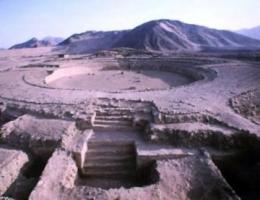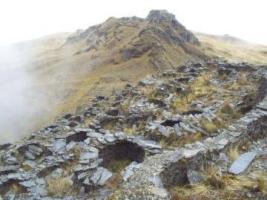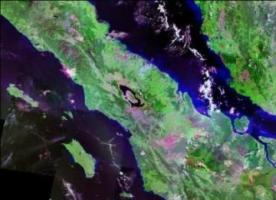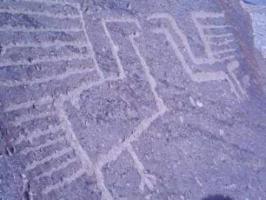Copy Link
Add to Bookmark
Report
Network Information Access 25

ZDDDDDDDDDDDDDDDDDD? IMMMMMMMMMMMMMMMMMMMMMMMMMMMMMMM; ZDDDDDDDDDDDDDDDDDD?
3 Founded By: 3 : Network Information Access : 3 Mother Earth BBS 3
3 Guardian Of Time 3D: 17APR90 :D3 NUP:> DECnet 3
3 Judge Dredd 3 : Judge Dredd : 3Text File Archives3
@DDDDDDDDBDDDDDDDDDY : File 25 : @DDDDDDDDDBDDDDDDDDY
3 HMMMMMMMMMMMMMMMMMMMMMMMMMMMMMMM< 3
3 IMMMMMMMMMMMMMMMMMMMMMMMMMMMMMMMMMMM; 3
@DDDDDDDDD6 Overview On Viruses & Threats III GDDDDDDDDDY
HMMMMMMMMMMMMMMMMMMMMMMMMMMMMMMMMMMM<
$_Virus Prevention for Multi-User Computers and Associated Networks
Virus prevention in the multi-user computer environment is aided
by the centralized system and user management, and the relative
richness of technical controls. Unlike personal computers, many
multi-user systems possess basic controls for user
authentication, for levels of access to files and directories,
and for protected regions of memory. By themselves, these
controls are not adequate, but combined with other policies and
procedures that specifically target viruses and related threats,
multi-user systems can greatly reduce their vulnerabilities to
exploitation and attack.
However, some relatively powerful multi-user machines are now so
compact as to be able to be located in an office or on a desk-
top. These machines are still fully able to support a small user
population, to connect to major networks, and to perform complex
real-time operations. But due to their size and increased ease
of operation, they are more vulnerable to unauthorized access.
Also, multi-user machines are sometimes managed by untrained
personnel who do not have adequate time to devote to proper
system management and who may not possess a technical background
or understanding of the system's operation. Thus, it is
especially important for organizations who use or are considering
machines of this nature to pay particular attention to the risks
of attack by unauthorized users, viruses, and related software.
The following sections offer guidance and recommendations for
improving the management and reducing the risk of attack for
multi-user computers and associated networks.
$_General Policies
Two general policies are suggested here. They are intended for
uniform adoption throughout an organization, i.e., they will not
be entirely effective if they are not uniformly followed. These
policies are as follows:
- An organization must assign a dedicated system manager to
operate each multi-user computer. The manager should be
trained, if necessary, to operate the system in a
practical and secure manner. This individual should be
assigned the management duties as part of his job
description; the management duties should not be assigned
"on top" of the individual's other duties, but rather
adequate time should be taken from other duties. System
management is a demanding and time-consuming operation
that can unexpectedly require complete dedication. As
systems are increasingly inter-connected via networks, a
poorly managed system that can be used as a pathway for
unauthorized access to other systems will present a
significant vulnerability to an organization. Thus, the
job of system manager should be assigned carefully, and
adequate time be given so that the job can be performed
completely.
- Management needs to impress upon users the need for their
involvement and cooperation in computer security. A
method for doing this is to create an organizational
security policy. This policy should be a superset of all
other computer-related policy, and should serve to
clearly define what is expected of the user. It should
detail how systems are to be used and what sorts of
computing are permitted and not permitted. Users should
read this policy and agree to it as a prerequisite to
computer use. It would also be helpful to use this
policy to create other policies specific to each multi-
user system.
$_Software Management
Effective software management can help to make a system less
vulnerable to attack and can make containment and recovery more
successful. Carefully controlled access to software will prevent
or discourage unauthorized access. If accurate records and
backups are maintained, software restoral can be accomplished
with a minimum of lost time and data. A policy of testing all
new software, especially public-domain software, will help
prevent accidental infection of a system by viruses and related
software. Thus, the following policies and procedures are
recommended:
- Use only licensed copies of vendor software, or software
that can be verified to be free of harmful code or other
destructive aspects. Maintain complete information about
the software, such as the vendor address and telephone
number, the license number and version, and update
information. Store the software in a secure, tamper-
proof location.
- Maintain configuration reports of all installed software,
including the operating system. This information will be
necessary if the software must be re-installed later.
- Prevent user access to system software and data. Ensure
that such software is fully protected, and that
appropriate monitoring is done to detect attempts at
unauthorized access.
- Prohibit users from installing software. Users should
first contact the system manager regarding new software.
The software should then be tested on an isolated system
to determine whether the software may contain destructive
elements. The isolated system should be set up so that,
to a practical degree, it replicates the target system,
but does not connect to networks or process sensitive
data. A highly-skilled user knowledgeable about viruses
and related threats should perform the testing and ensure
that the software does not change or delete other
software or data. Do not allow users to directly add any
software to the system, whether from public software
repositories, or other systems, or their home systems.
- Teach users to protect their data from unauthorized
access. Ensure that they know how to use access controls
or file protection mechanisms to prevent others from
reading or modifying their files. As possible, set
default file protections such that when a user creates a
file, the file can be accessed only by that user, and no
others. Each user should not permit others to use his or
her account.
- Do not set-up directories to serve as software
repositories unless technical controls are used to
prevent users from writing to the directory. Make sure
that users contact the system manager regarding software
they wish to place in a software repository. It would be
helpful to track where the software is installed by
setting up a process whereby users must first register
their names before they can copy software from the
directory.
- If developing software, control the update process so
that the software is not modified without authorization.
Use a software management and control application to
control access to the software and to automate the
logging of modifications.
- Accept system and application bug fixes or patches only
from highly reliable sources, such as the software
vendor. Do not accept patches from anonymous sources,
such as received via a network. Test the new software on
an isolated system to ensure that the software does not
make an existing problem worse.
$_Technical Controls
Many multi-user computers contain basic built-in technical
controls. These include user authentication via passwords,
levels of user privilege, and file access controls. By using
these basic controls effectively, managers can significantly
reduce the risk of attack by preventing or deterring viruses and
related threats from accessing a system.
Perhaps the most important technical control is user
authentication, with the most widely form of user authentication
being a username associated with a password. Every user account
should use a password that is deliberately chosen so that simple
attempts at password cracking cannot occur. An effective
password should not consist of a person's name or a recognizable
word, but rather should consist of alphanumeric characters and/or
strings of words that cannot easily be guessed. The passwords
should be changed at regular intervals, such as every three to
six months. Some systems include or can be modified to include a
password history, to prevent users from reusing old passwords.
The username/password mechanism can sometimes be modified to
reduce opportunities for password cracking. One method is to
increase the running time of the password encryption to several
seconds. Another method is to cause the user login program to
accept from three to five incorrect password attempts in a row
before disabling the user account for several minutes. Both
methods significantly increase the amount of time a password
cracker would spend when making repeated attempts at guessing a
password. A method for ensuring that passwords are difficult to
crack involves the use of a program that could systematically
guess passwords, and then send warning messages to the system
manager and corresponding users if successful. The program could
attempt passwords that are permutations of each user's name, as
well as using words from an on-line dictionary.
Besides user authentication, access control mechanisms are
perhaps the next most important technical control. Access
control mechanisms permit a system manager to selectively permit
or bar user access to system resources regardless of the user's
level of privilege. For example, a user at a low-level of system
privilege can be granted access to a resource at a higher level
of privilege without raising the user's privilege through the use
of an access control that specifically grants that user access.
Usually, the access control can determine the type of access,
e.g., read or write. Some access controls can send alarm
messages to audit logs or the system manager when unsuccessful
attempts are made to access resources protected by an access
control.
Systems which do not use access controls usually contain another
more basic form that grants access based on user categories.
Usually, there are four: owner, where only the user who "owns" or
creates the resource can access it; group, where anyone in the
same group as the owner can access the resource; world, where all
users can access the resource, and system, which supersedes all
other user privileges. Usually, a file or directory can be set
up to allow any combination of the four. Unlike access controls,
this scheme doesn't permit access to resources on a specific user
basis, thus if a user at a low level of privilege requires access
to a system level resource, the user must be granted system
privilege. However, if used carefully, this scheme can
adequately protect users' files from being accessed without
authorization. The most effective mode is to create a unique
group for each user. Some systems may permit a default file
permission mask to be set so that every file created would be
accessible only by the file's owner.
Other technical control guidelines are as follows:
- Do not use the same password on several systems.
Additionally, sets of computers that are mutually
trusting in the sense that login to one constitutes login
to all should be carefully controlled.
- Disable or remove old or unnecessary user accounts.
Whenever users leave an organization or no longer use a
system, change all passwords that the users had knowledge
of.
- Practice a "least privilege" policy, whereby users are
restricted to accessing resources on a need-to-know basis
only. User privileges should be as restricting as
possible without adversely affecting the performance of
their work. To determine what level of access is
required, err first by setting privileges to their most
restrictive, and upgrade them as necessary. If the
system uses access controls, attempt to maintain a user's
system privileges at a low level while using the access
controls to specifically grant access to the required
resources.
- Users are generally able to determine other users' access
to their files and directories, thus instruct users to
carefully maintain their files and directories such that
they are not accessible, or at a minimum, not writable,
by other users. As possible, set default file
protections such that files and directories created by
each user are accessible by only that user.
- When using modems, do not provide more access to the
system than is necessary. For example, if only dial-out
service is required, set up the modem or telephone line
so that dial-in service is not possible. If dial-in
service is necessary, use modems that require an
additional passwords or modems that use a call-back
mechanism. These modems may work such that a caller must
first identify himself to the system. If the
identification has been pre-recorded with the system and
therefore valid, the system then calls back at a pre-
recorded telephone number.
- If file encryption mechanisms are available, make them
accessible to users. Users may wish to use encryption as
a further means of protecting the confidentiality of
their files, especially if the system is accessible via
networks or modems.
- Include software so that users can temporarily "lock"
their terminals from accepting keystrokes while they are
away. Use software that automatically disables a user's
account if no activity occurs after a certain interval,
such as 10 - 15 minutes.
$_Monitoring
Many multi-user systems provide a mechanism for automatically
recording some aspects of user and system activity. This
monitoring mechanism, if used regularly, can help to detect
evidence of viruses and related threats. Early detection is of
great value, because malicious software potentially can cause
significant damage within a matter of minutes. Once evidence of
an attack has been verified, managers can use contingency
procedures to contain and recover from any resultant damage.
Effective monitoring also requires user involvement, and
therefore, user education. Users must have some guidelines for
what constitutes normal and abnormal system activity. They need
to be aware of such items as whether files have been changed in
content, date, or by access permissions, whether disk space has
become suddenly full, and whether abnormal error messages occur.
They need to know whom to contact to report signs of trouble and
then the steps to take to contain any damage.
The following policies and procedures for effective monitoring
are recommended:
- Use the system monitoring/auditing tools that are
available. Follow the procedures recommended by the
system vendor, or start out by enabling the full level or
most detailed level of monitoring. Use tools as
available to help read the logs, and determine what level
of monitoring is adequate, and cut back on the level of
detail as necessary. Be on the guard for excessive
attempts to access accounts or other resources that are
protected. Examine the log regularly, at least weekly if
not more often.
- As a further aid to monitoring, use alarm mechanisms
found in some access controls. These mechanisms send a
message to the audit log whenever an attempt is made to
access a resource protected by an access control.
- If no system monitoring is available, or if the present
mechanism is unwieldy or not sufficient, investigate and
purchase other monitoring tools as available. Some
third-party software companies sell monitoring tools for
major operating systems with capabilities that supersede
those of the vendor's.
- Educate users so that they understand the normal
operating aspects of the system. Ensure that they have
quick access to an individual or group who can answer
their questions and investigate potential virus
incidents.
- Purchase or build system sweep programs to checksum files
at night, and report differences from previous runs. Use
a password checker to monitor whether passwords are being
used effectively.
- Always report, log, and investigate security problems,
even when the problems appear insignificant. Use the log
as input into regular security reviews. Use the reviews
as a means for evaluating the effectiveness of security
policies and procedures.
- Enforce some form of sanctions against users who
consistently violate or attempt to violate security
policies and procedures. Use the audit logs as evidence,
and bar the users from system use.
$_Contingency Planning
As stressed in part II, backups are the most important
contingency planning activity. A system manager must plan for
the eventuality of having to restore all software and data from
backup tapes for any number of reasons, such as disk drive
failure or upgrades. It has been shown that viruses and related
threats could potentially and unexpectedly destroy all system
information or render it useless, thus managers should pay
particular attention to the effectiveness of their backup
policies. Backup policies will vary from system to system,
however they should be performed daily, with a minimum of several
months backup history. Backup tapes should be verified to be
accurate, and should be stored off-site in a secured location.
Viruses and related software threats could go undetected in a
system for months to years, and thus could be backed up along
with normal system data. If such a program would suddenly
trigger and cause damage, it may require much searching through
old backups to determine when the program first appeared or was
infected. Therefore the safest policy is to restore programs,
i.e., executable and command files, from their original vendor
media only. Only system data that is non-executable should be
restored from regular backups. Of course, in the case of command
files or batch procedures that are developed or modified in the
course of daily system activity, these may need to be inspected
manually to ensure that they have not been modified or damaged.
Other recommended contingency planning activities are as follows:
- Create a security distribution list for hand-out to each
user. The list should include the system manager's name
and number, and other similar information for individuals
who can answer users' questions about suspicious or
unusual system activity. The list should indicate when
to contact these individuals, and where to reach them in
emergencies.
- Coordinate with other system managers, especially if
their computers are connected to the same network.
Ensure that all can be contacted quickly in the event of
a network emergency by using some mechanism other than
the network.
- Besides observing physical security for the system as
well as its software and backup media, locate terminals
in offices that can be locked or in other secure areas.
- If users are accessing the system via personal computers
and terminal emulation software, keep a record of where
the personal computers are located and their network or
port address for monitoring purposes. Control carefully
whether such users are uploading software to the system.
- Exercise caution when accepting system patches. Do not
accept patches that arrive over a network unless there is
a high degree of certainty as to their validity. It is
best to accept patches only from the appropriate software
vendor.
$_Associated Network Concerns
Multi-user computers are more often associated with relatively
large networks than very localized local area networks or
personal computer networks that may use dedicated network
servers. The viewpoint taken here is that wide area network and
large local area network security is essentially a collective
function of the systems connected to the network, i.e., it is not
practical for a controlling system to monitor all network traffic
and differentiate between authorized and unauthorized use. A
system manager should generally assume that network connections
pose inherent risks of unauthorized access to the system in the
forms of unauthorized users and malicious software. Thus, a
system manager needs to protect the system from network-borne
threats and likewise exercise responsibility by ensuring that his
system is not a source of such threats, while at the same time
making network connections available to users as necessary. The
accomplishment of these aims will require the use of technical
controls to restrict certain types of access, monitoring to
detect violations, and a certain amount of trust that users will
use the controls and follow the policies.
Some guidelines for using networks in a more secure manner are as
follows:
- Assume that network connections elevate the risk of
unauthorized access. Place network connections on system
which provide adequate controls, such as strong user
authentication and access control mechanisms. Avoid
placing network connections on system which process
sensitive data.
- If the system permits, require an additional password or
form of authentication for accounts accessed from network
ports. If possible, do not permit access to system
manager accounts from network ports.
- If anonymous or guest accounts are used, place
restrictions on the types of commands that can be
executed from the account. Don't permit access to
software tools, commands that can increase privileges,
and so forth.
- As possible, monitor usage of the network. Check if
network connections are made at odd hours, such as during
the night, or if repeated attempts are made to log in to
the system from a network port.
- When more than one computer is connected to the same
network, arrange the connections so that one machine
serves as a central gateway for the other machines. This
will allow a rapid disconnect from the network in case of
an attack.
- Ensure that users are fully educated in network usage.
Make them aware of the additional risks involved in
network access. Instruct them to be on the alert for any
signs of tampering, and to contact an appropriate person
if they detect any suspicious activity. Create a policy
for responsible network usage that details what sort of
computing activity will and will not be tolerated. Have
users read the policy as a prerequisite to network use.
- Warn users to be suspicious of any messages that are
received from unidentified or unknown sources.
- Don't advertise a system to network users by printing
more information than necessary on a welcome banner. For
example, don't include messages such as "Welcome to the
Payroll Accounting System" that may cause the system to
be more attractive to unauthorized users.
- Don't network to outside organizations without a mutual
review of security practices
-JUDGE DREDD/NIA
[OTHER WORLD BBS]






















